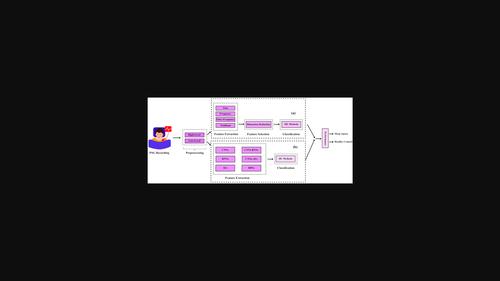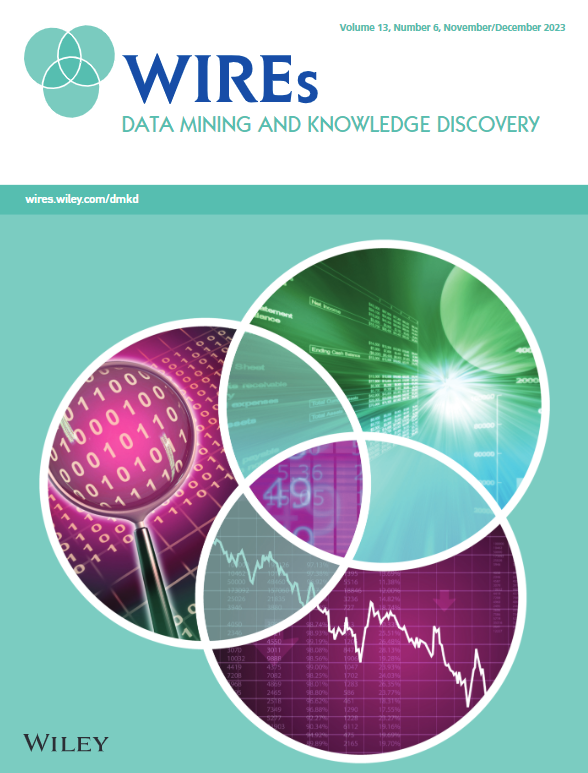利用人工智能技术从生物医学信号中自动诊断睡眠呼吸暂停:方法、挑战和未来工作
IF 11.7
2区 计算机科学
Q1 COMPUTER SCIENCE, ARTIFICIAL INTELLIGENCE
Wiley Interdisciplinary Reviews-Data Mining and Knowledge Discovery
Pub Date : 2022-10-11
DOI:10.1002/widm.1478
引用次数: 12
摘要
呼吸暂停是一种睡眠障碍,它会在睡眠期间短暂停止或减少气流。睡眠呼吸暂停可能会持续几秒钟,并在许多人睡觉时发生。这种呼吸减少与大声打鼾有关,这可能会使人感到窒息。迄今为止,研究者们已经引入了多种方法来诊断睡眠呼吸暂停,其中以多导睡眠图(polysomnography, PSG)方法最为完善。PSG信号的分析非常复杂。利用机器学习(ML)和深度学习(DL)等人工智能(AI)方法,从生物信号中自动诊断睡眠呼吸暂停的研究很多。本研究对人工智能方法在睡眠呼吸暂停诊断方面的研究进行综述和探讨。首先,介绍了基于ML和DL技术的睡眠呼吸暂停计算机辅助诊断系统(CADS)及其组成部分,包括数据集、预处理、ML和DL方法。本研究还以表格形式总结了ML和DL方法诊断睡眠呼吸暂停研究的重要规范。下面,对这一领域的研究进行了全面的讨论。使用人工智能方法诊断睡眠呼吸暂停的挑战对研究人员来说至关重要。因此,这些障碍得到了精心处理。在另一部分中,介绍了从PSG信号和人工智能技术中检测睡眠呼吸暂停研究的最重要的未来工作。最后,本研究的主要发现在结论部分提供。本文章由计算机程序翻译,如有差异,请以英文原文为准。

Automatic diagnosis of sleep apnea from biomedical signals using artificial intelligence techniques: Methods, challenges, and future works
Apnea is a sleep disorder that stops or reduces airflow for a short time during sleep. Sleep apnea may last for a few seconds and happen for many while sleeping. This reduction in breathing is associated with loud snoring, which may awaken the person with a feeling of suffocation. So far, a variety of methods have been introduced by researchers to diagnose sleep apnea, among which the polysomnography (PSG) method is known to be the best. Analysis of PSG signals is very complicated. Many studies have been conducted on the automatic diagnosis of sleep apnea from biological signals using artificial intelligence (AI), including machine learning (ML) and deep learning (DL) methods. This research reviews and investigates the studies on the diagnosis of sleep apnea using AI methods. First, computer aided diagnosis system (CADS) for sleep apnea using ML and DL techniques along with its parts including dataset, preprocessing, and ML and DL methods are introduced. This research also summarizes the important specifications of the studies on the diagnosis of sleep apnea using ML and DL methods in a table. In the following, a comprehensive discussion is made on the studies carried out in this field. The challenges in the diagnosis of sleep apnea using AI methods are of paramount importance for researchers. Accordingly, these obstacles are elaborately addressed. In another section, the most important future works for studies on sleep apnea detection from PSG signals and AI techniques are presented. Ultimately, the essential findings of this study are provided in the conclusion section.
求助全文
通过发布文献求助,成功后即可免费获取论文全文。
去求助
来源期刊

Wiley Interdisciplinary Reviews-Data Mining and Knowledge Discovery
COMPUTER SCIENCE, ARTIFICIAL INTELLIGENCE-COMPUTER SCIENCE, THEORY & METHODS
CiteScore
22.70
自引率
2.60%
发文量
39
审稿时长
>12 weeks
期刊介绍:
The goals of Wiley Interdisciplinary Reviews-Data Mining and Knowledge Discovery (WIREs DMKD) are multifaceted. Firstly, the journal aims to provide a comprehensive overview of the current state of data mining and knowledge discovery by featuring ongoing reviews authored by leading researchers. Secondly, it seeks to highlight the interdisciplinary nature of the field by presenting articles from diverse perspectives, covering various application areas such as technology, business, healthcare, education, government, society, and culture. Thirdly, WIREs DMKD endeavors to keep pace with the rapid advancements in data mining and knowledge discovery through regular content updates. Lastly, the journal strives to promote active engagement in the field by presenting its accomplishments and challenges in an accessible manner to a broad audience. The content of WIREs DMKD is intended to benefit upper-level undergraduate and postgraduate students, teaching and research professors in academic programs, as well as scientists and research managers in industry.
 求助内容:
求助内容: 应助结果提醒方式:
应助结果提醒方式:


